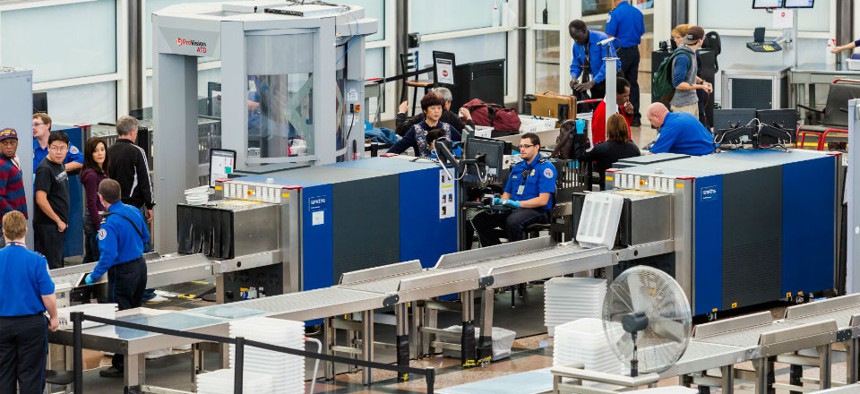
TSA screeners on the job at Denver International Airport. Arina P Habich/Shutterstock
A Lesson for DHS: Engagement Happens at the Local Level
Team managers, not agency leaders, set the tone.
Three years ago, the workplace environment at the Homeland Security Department looked bleak, ranking among the lowest federal agencies for employee satisfaction. Despite leadership attention, attempts at creating change continue to prove ineffectual. As The Washington Post reports, DHS has spent about $2 million on studies, while progress remains elusive.
DHS’ interventions to improve engagement include a headquarters-based recognition program, creation of a steering committee and leadership council, and executive leader selection. However, top-down approaches to improving engagement miss the mark.
Will Transportation Security Administration screeners at the Missoula, Montana, airport have a better employee experience because DHS created a new steering committee? Will Border Patrol officers in McAllen, Texas, be more engaged by knowing that 300 out of nearly 200,000 employees are being recognized at headquarters? What DHS needs to understand is that change happens at the local level. Three years ago, Gallup wrote an open letter in Government Executive that offered the keys to unlocking DHS’ engagement conundrum: Focus on local managers.
A team’s manager is the critical contributor to shaping the team’s culture. Employees interact with their supervisor or manager much more than they ever would with leaders, and these day-to-day interactions are what make employees either thrive or suffer at work. The managers’ role is one of great responsibility, and they need tools and support to be successful.
One of the most important things a manager can to do move the needle on engagement is to truly know his or her team members and what motivates them. The essence of this lies in understanding and developing an employee's strengths more than trying to fix his or her weaknesses.
The first step in this effort is to assess what those individual strengths may be. The next step is to use those strengths to drive the conversation and interactions with the team and individual employees. The last step is to ground an employee's strengths into conversations about both performance and recognition. When a manager cultivates those talents day to day, the employees’ mind-set shifts from the rational connection of just doing the job to an emotional connection of being engaged in their work.
As DHS Secretary Jeh Johnson strives to move DHS out of last place in the engagement rankings, our recommendation remains the same: Focus on local managers. Making managers fluent in the language of strengths is a vital part of ensuring that all employees, such as screeners and border officers, truly have a better experience on the job.
Steve Ander and Jessica Mangskau are Gallup engagement consultants who are former government employees.
(Image via Arina P Habich/Shutterstock.com)
Correction: This column has been updated to reflect that the Homeland Security Department was among the lowest ranked agencies for employee satisfaction. It was not the lowest ranked agency.






